Get PeakVisor App
Sign In
Search by GPS coordinates
- Latitude
- ° ' ''
- Longitude
- ° ' ''
- Units of Length
Share×

Scan the QR code and open PeakVisor on your phone
❤ Wishlist ×
Choose
Delete
Kootenay National Park’s unconventional creation occurred in 1920 when an agreement was made between the province of British Columbia and the Canadian government to build the first roadway across the Canadian Rockies. Though the agreement initially faltered due to lack of funding, construction on the road was eventually completed after residents of nearby Wildermere Valley petitioned the government to dedicate five miles on both sides of the roadway to a national park.
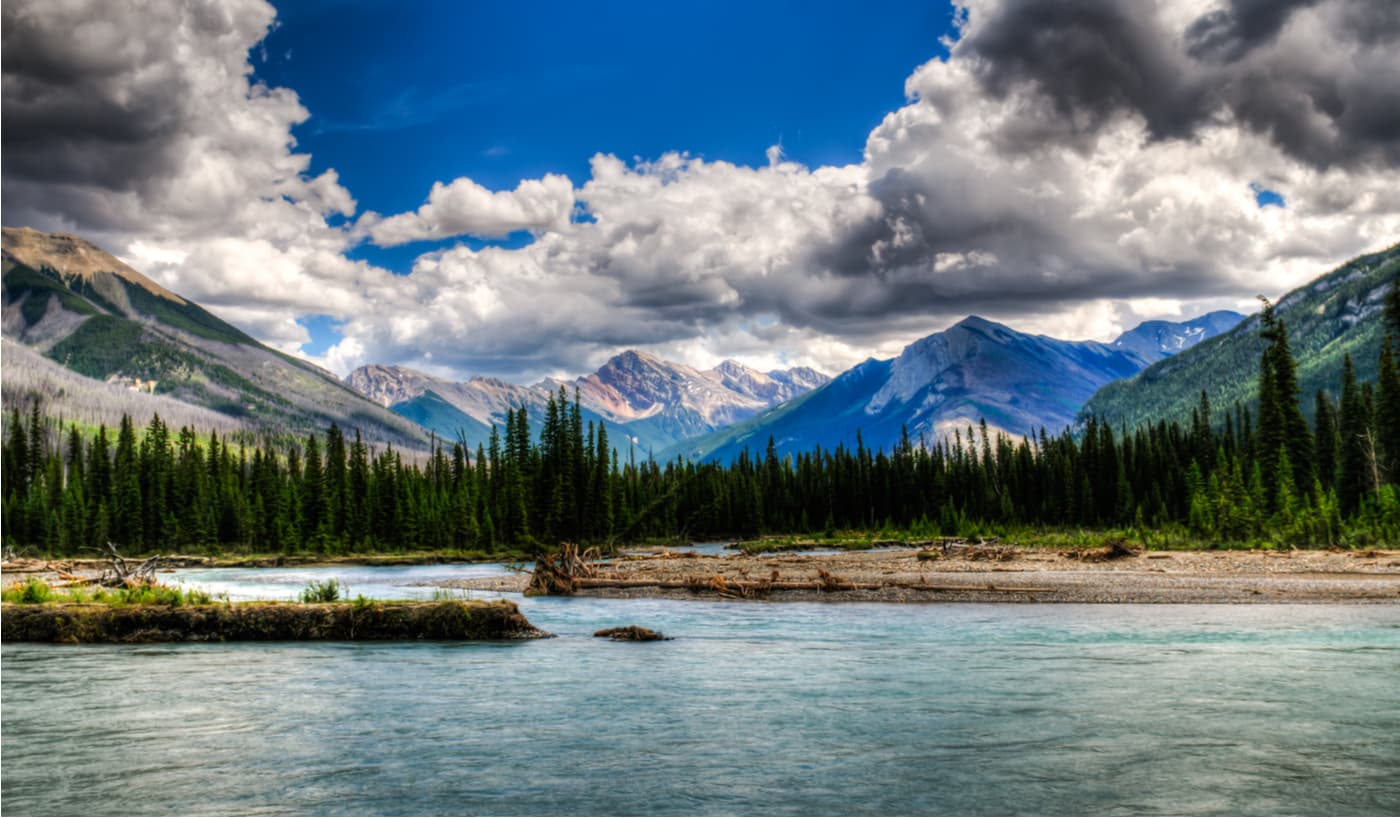
Unlike its predecessors, Kootenay National Park was never intended to be a park at all, and despite being Canada’s tenth national park, it became the country’s very first park to be centered around a roadway, rather than a railway. The road itself would eventually be constructed in a way that would highlight the natural features of the landscape and road construction efforts were creatively hidden from visitors.
Today, the park is still centered around the Banff-Windermere Highway. The highway, which stretches for 65 miles from Radium Hot Springs, British Columbia to Castle Junction, Alberta, cuts through several impressive mountain ranges and highlights illustrious summits like Mount Berland, Mount Kindersley, Redstreak Mountain, Mount Sinclair, Mount Wardle, and Spar Mountain.
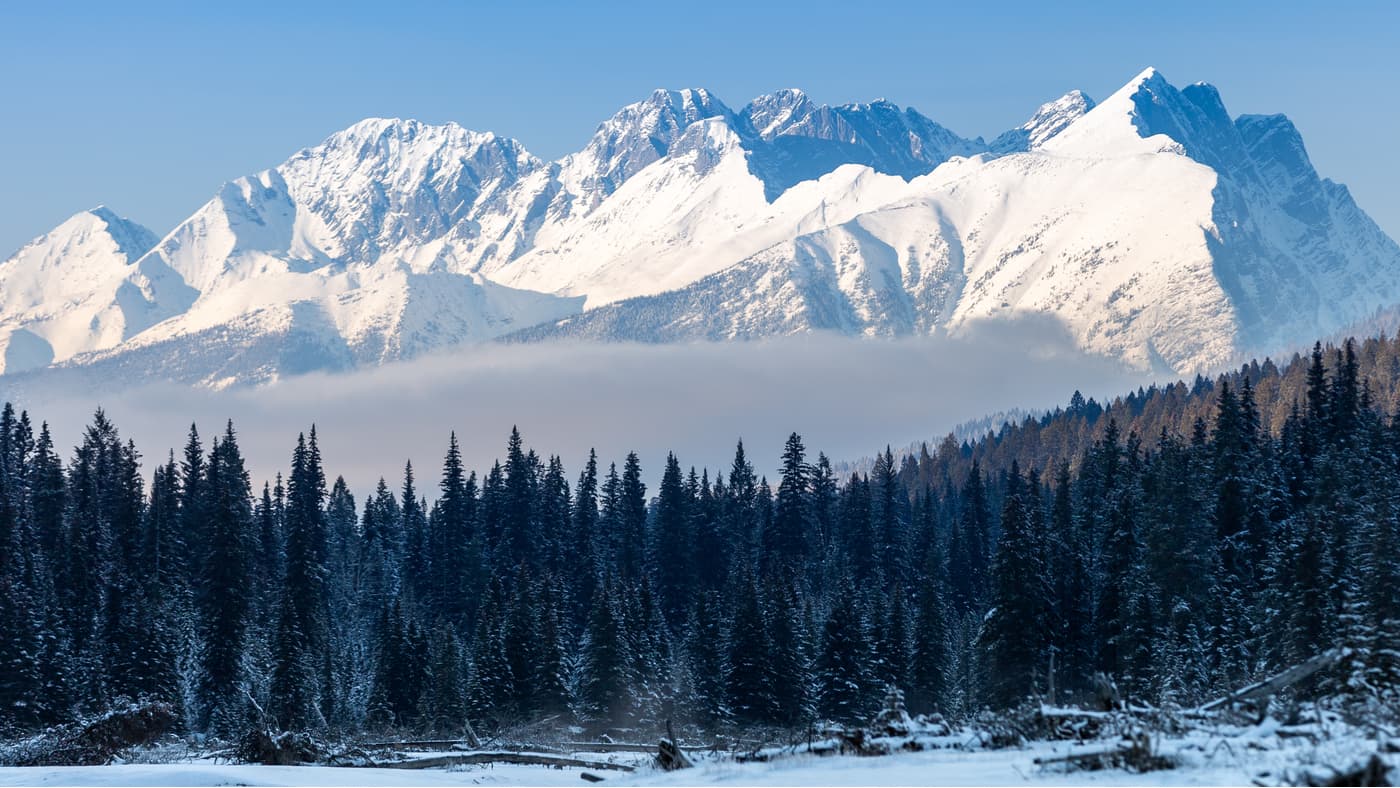
Kootenay National park sits in the southeastern corner of British Columbia and protects 543 square miles of incredible Rocky Mountain wilderness, including portions of the Kootenay and Park mountain ranges. Together, with Banff, Jasper, and Yoho National Parks, as well as Mount Robson, Mount Assiniboine, and Hamber Provincial Parks, Kootenay forms a UNESCO World Heritage Site. This designation acknowledges the landscape’s exceptional natural beauty, critical habitats for rare and endangered species, and the region’s exceptional mountain peaks, glaciers, lakes, canyons, and caves.
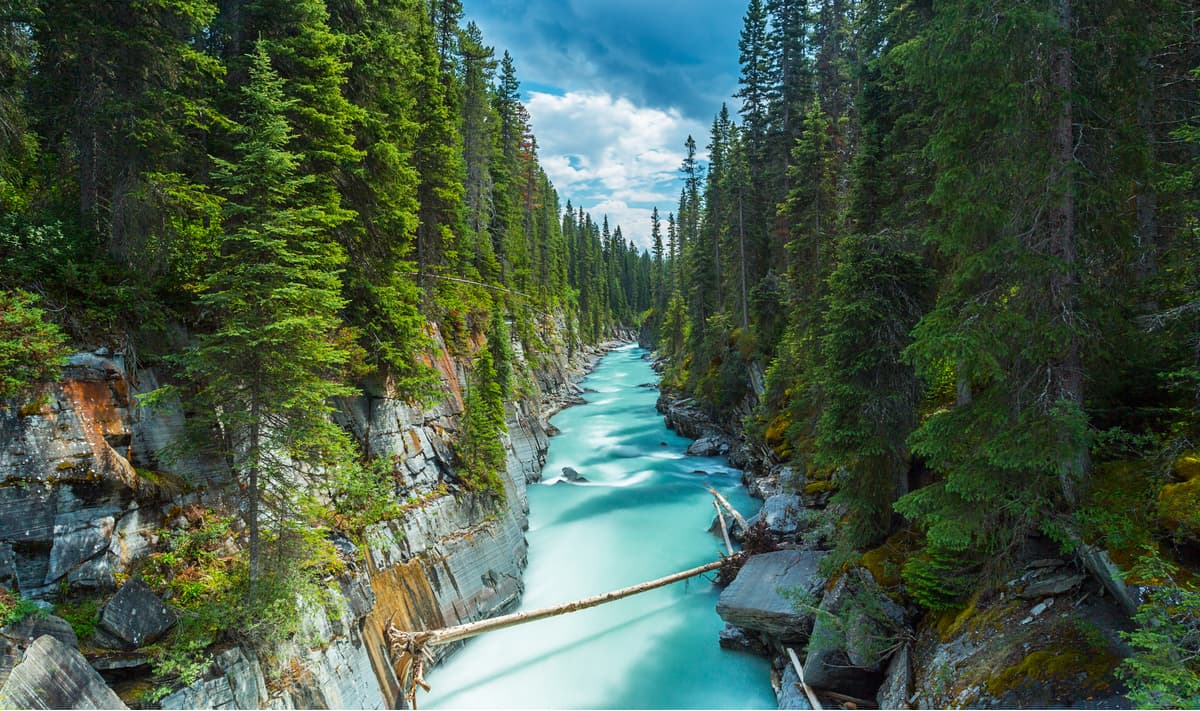
The park contains the entirety of the Vermilion River and portions of the Kootenay River, and elevations in the park range from 3,000 feet to over 11,000 feet at the summit of Deltaform Mountain. The Continental Divide forms a boundary between Kootenay and Banff National Park, while the watershed between the Vermillion and Kicking Horse River form the park’s boundary with Yoho National Park.
Though the park wasn’t designated until 1920, archaeological evidence suggests that humans have inhabited or traveled through this stretch of Canadian wilderness for approximately 10,000 years. Pictographs found in hot spring caves indicate that the Ktunaxa people, known as ‘Kootenay,’ in British Columbia, were the first to make permanent use of the area. Eventually, in the 1840s, European fur traders and trappers would make their way to this stretch of the Canadian Rockies and early homesteaders would establish famous landmarks like Radium Hot Springs.
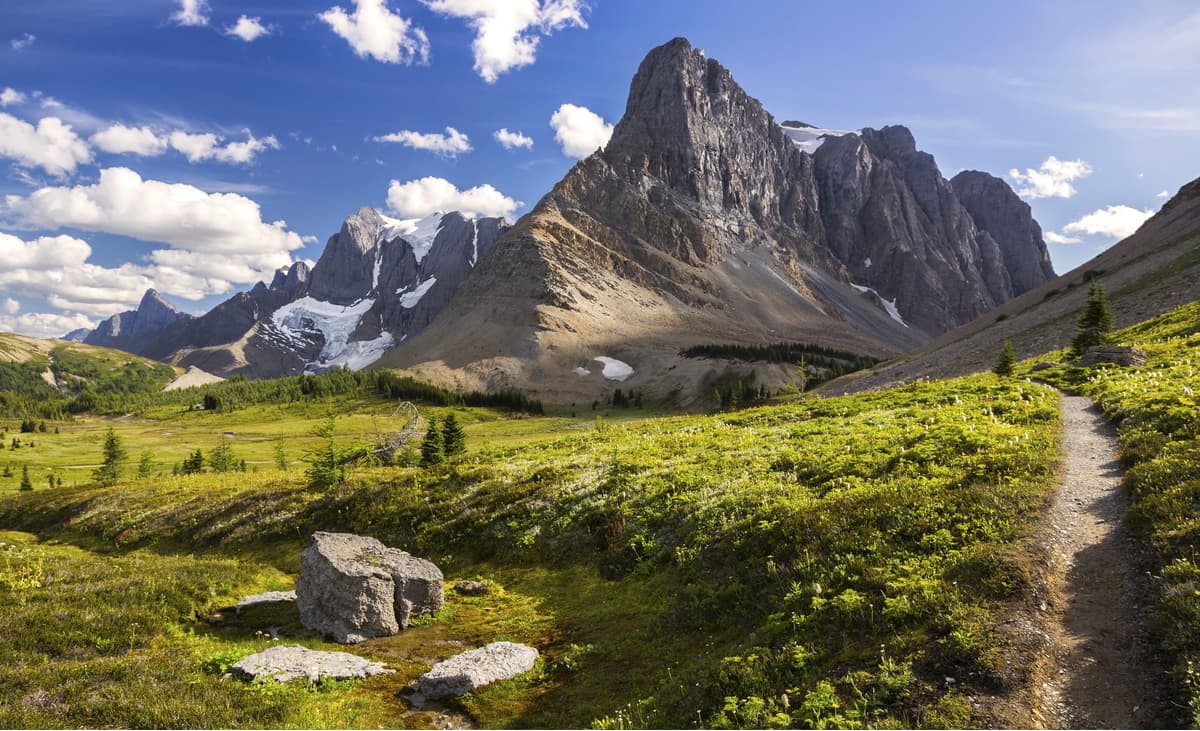
In addition to housing 71 named summits, Kootenay also contains three distinct vegetation zones – the montane zone, subalpine zone, and the alpine zone. The montane zone is the lowest of the three and is characterized by grassy meadows, Douglas fir, lodgepole pine, and white spruce. The subalpine zone, on the other hand, supports large stands of coniferous forest, subalpine fir, and lodgepole pine. The highest zone, the alpine zone, reaches above the tree line and contains the park’s beautiful alpine meadows.
Like nearby Rocky Mountain parks, Kootenay also serves as a sanctuary for a variety of wildlife. Approximately 57 mammal species can be found in the park, including moose, elk, bighorn sheep, grizzly bears, black bears, wolves, and cougar. Reptiles and amphibians are far more scarce, due to the park’s severe climate, but more than 280 species of birds call Kootenay home.
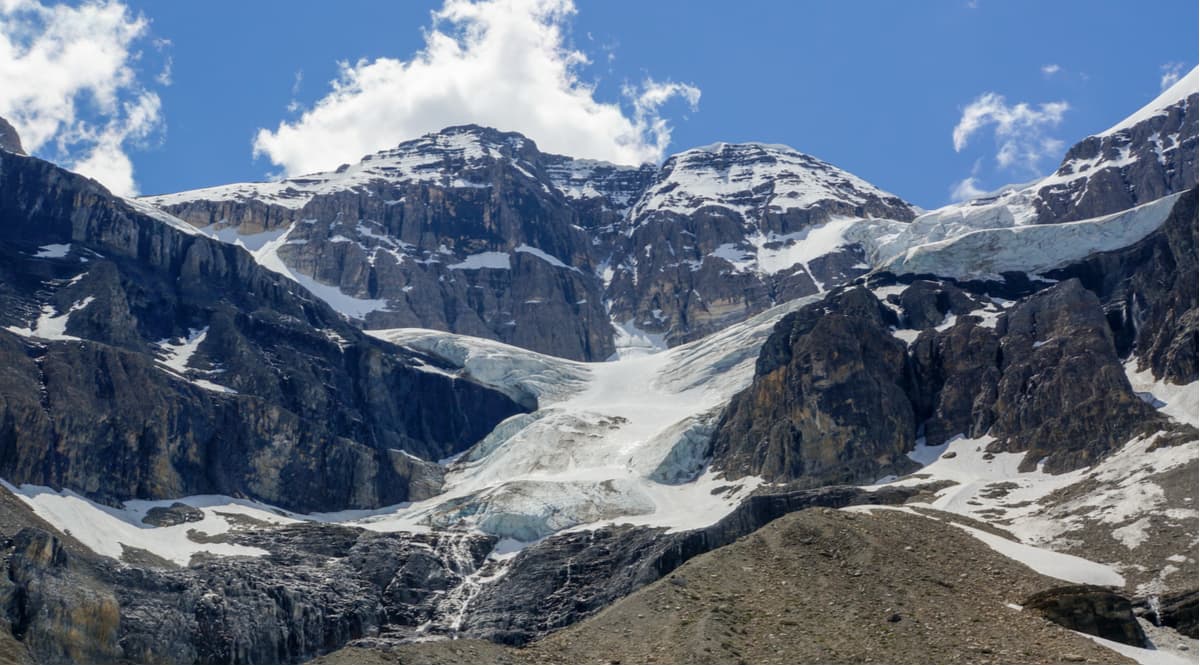
Stanley Glacier is arguably the most popular trail in Kootenay National Park. This moderate footpath gently climbs for just over 5 miles to sweeping views of Stanley Glacier. Though the first half of the hike leads through a large burn area, the second part of this trek follows the creek to Stanley basin where hikers can overlook the spectacular cliffside of Stanley Peak and the Stanley Glacier. Adventurous hikers can also opt to continue beyond the end of the maintained trail to explore several caves beneath Stanley Peak.
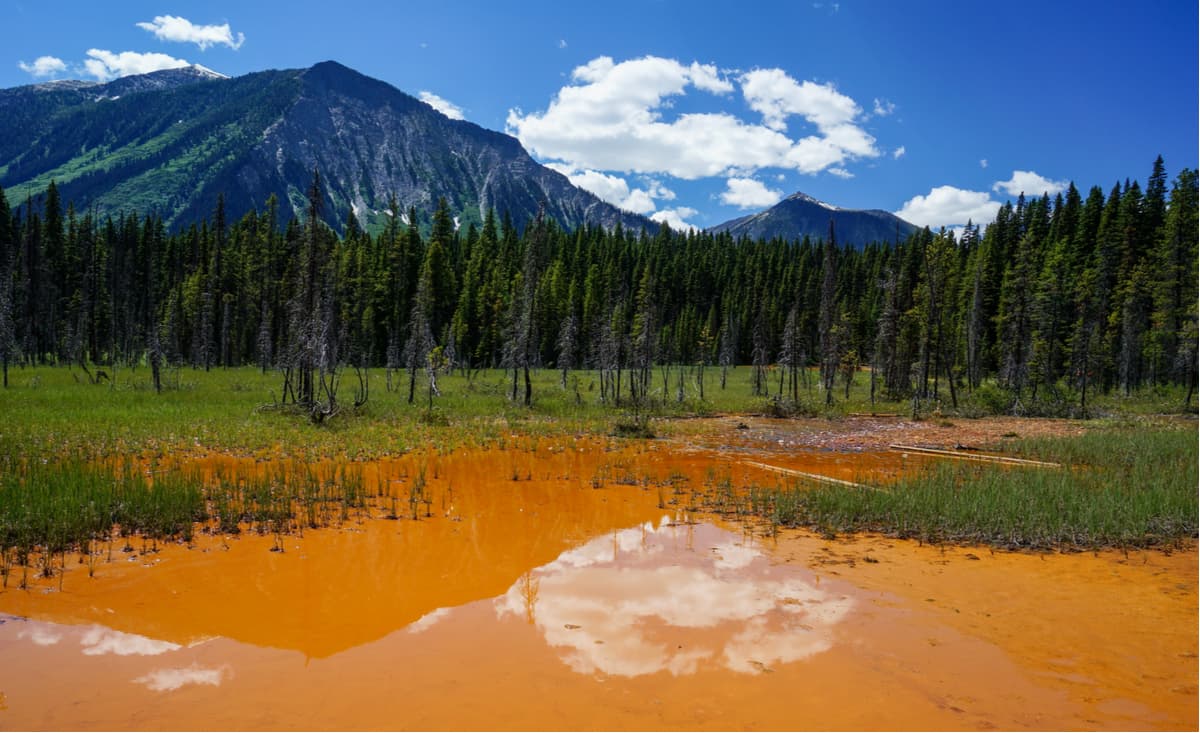
One of the park’s main attractions is the Paint Pots. These acidic, cold water, mineral springs are composed of iron oxide and produce fascinating, colorful pools. The .5-mile stroll to the paint pots is easy and family friendly, making them an excellent option for visitors with less time in the park.
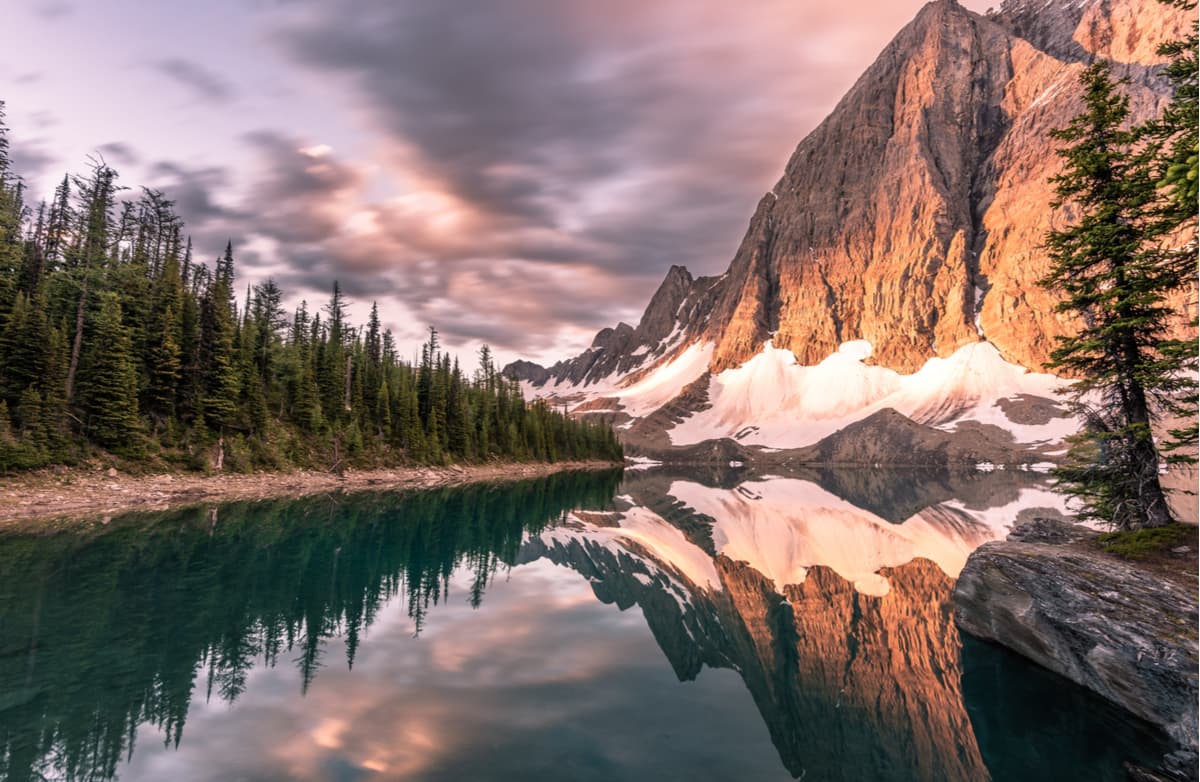
The Kootenay Rockwall Trail is an iconic multi-day adventure through the Canadian Rockies. The trail travels for over 33 miles, beginning and ending along Highway 93. In addition to majestic alpine scenery, hikers attempting the Kootenay Rockwall Trail will hike over three high alpine passes and soak in sweeping views of hanging glaciers, wildflower meadows, larch forests, alpine lakes, and one of the tallest waterfalls in the Canadian Rockies.
Hikers that don’t have time to hike the entire Kootenay Rockwall Trail will often opt to make the trek to one of the trail’s most iconic alpine lakes - Floe Lake. The 6.5-mile Floe Lake trail climbs 2,350 feet in elevation and serves as an excellent basecamp for exploring Numa Pass. Floe Lake is an isolated glacial lake that sits beneath a series of towering granite cliffs including Floe Peak and Foster Peak.
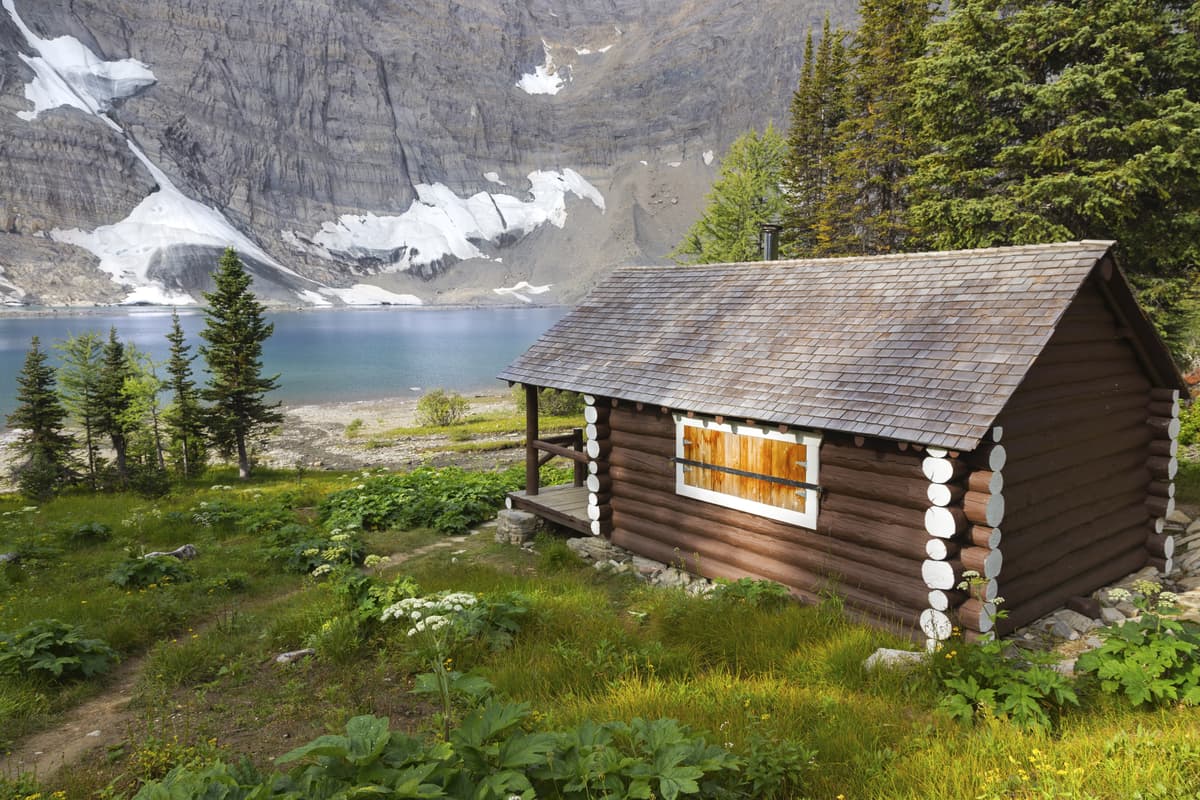
This incredible 10+ mile hike travels from wildflower-filled meadows to sprawling vistas of Canadian Rock summits including Mount Harkins, Split Peak, and Lunette Peak. The Kindersley-Sinclair loop is considered a full-day, strenuous adventure. However, those willing to put in the effort will be rewarded with what Parks Canada considers to be Kootenay’s most rewarding trail.
The Kootenay Park Lodge was originally constructed in 1923 by the Canadian Pacific Railway and was known as the Vermilion River Camp. The lodge was known as one of the many wilderness lodges in the region and was intended to inspire people to travel to the Canadian Rockies. The original cabins were built in the 1930s and have remained the only development tucked within the park boundaries. Despite the cabins receiving much-needed upgrades over the years, they still maintain their rustic charm. Lodge dining is available to guests each evening and the general store offers visitors a healthy selection of snacks and souvenirs.
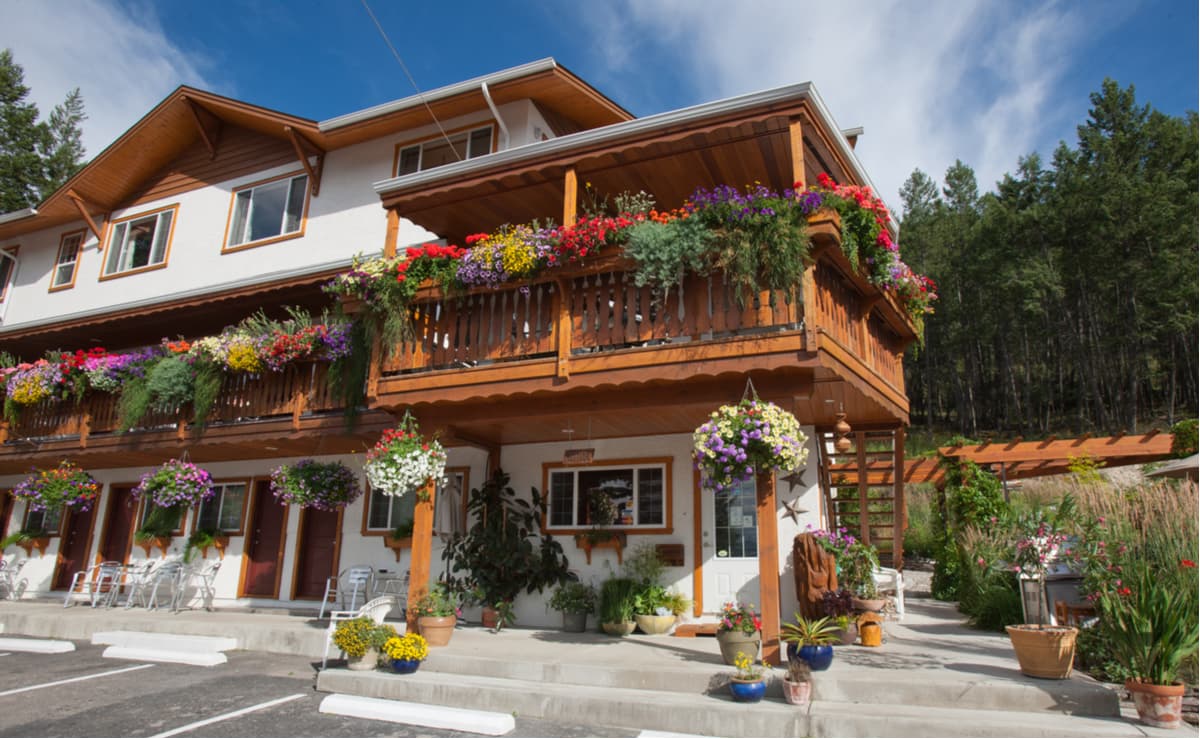
The village of Radium Hot Springs is a tiny townsite named after the nearby Radium Hot Springs in Kootenay National Park. Radium Hot Springs sits at the southwestern entrance of Kootenay National Park and offers a number of popular accommodations like the Bighorn Meadows Resort, Nipika Mountain Resort, and Rocky Mountain Springs Lodge. In the winter months, visitors can take advantage of Sled Radium or Ski, Stay & Soak to explore epic mountain sledding, ski touring, and soak in the infamous Radium Hot Springs.
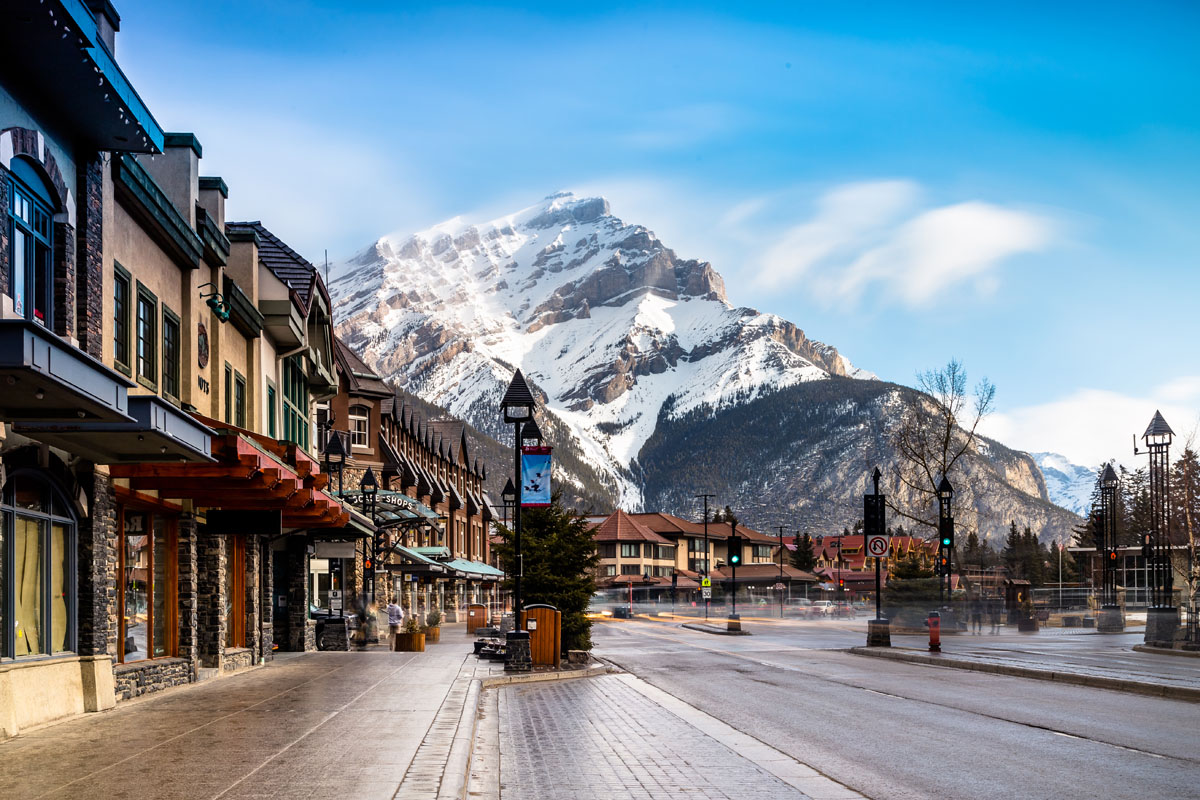
Banff, which sits just northeast of Kootenay National Park, offers visitors a variety of restaurants, shops, hotels, and resorts. Not to mention, visitors can pass the time by visiting a variety of cultural landmarks, museums, art galleries, and historic sites. The lively streets of downtown Banff are peppered with restaurants, shopping, and mountain-town charm.
Nicknamed the “Castle in the Rockies,” the world-famous, historic Fairmont Banff Springs Hotel, offers year-round resort amenities and unparalleled skiing opportunities. However, there are plenty of other popular resorts and other accommodations in and around the town of Banff. Not to mention, Banff is home to three world-class ski resorts – Banff Sunshine, Lake Louise, and Norquay, which cumulatively boast over 8,000 acres of accessible terrain.
Explore Kootenay National Park with the PeakVisor 3D Map and identify its summits.








